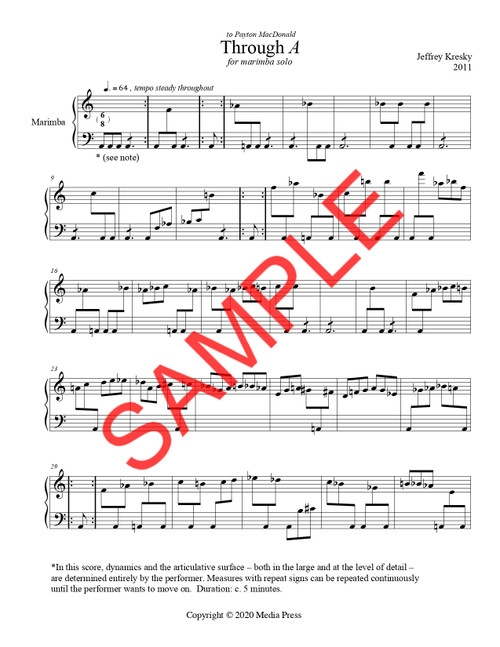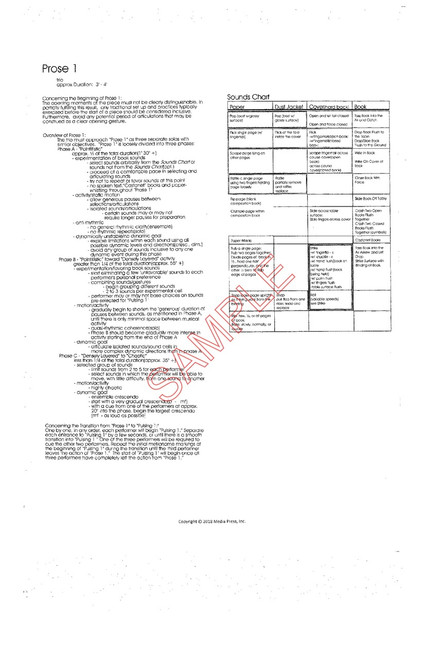Patchwork for solo marimba includes one score.
Patchwork was written for marimba solo in 1989, and was revised in 1997. The piece is loosely based on simple intervallic relationships, stark dynamic contrasts, and the disintegration of musical material.
Following a very short, exposition, and linear first section, the material expands into complex rhythmic variations in phrased groupings and subsequent permutations of [2 - 1 - 3]. Though somewhat developmental, the second section exhibits signs of disintegrating musical material through the use of tremolos and rapid grace-note clusters.
Print size: 11 x 17"
Review from Percussive Notes (2021):
Patchwork
Alan Sentman
Alan Sentman’s 1989 composition “Patchwork” is a four-mallet solo written in three movements for a 4.3-octave marimba. The publisher does not assign a difficulty level or duration to this piece, but I would attach at least a “medium-advanced” level to this work due to the use of extended techniques and rhythmic complexities.
“Patchwork” explores contemporary concepts for melody, phrasing, and technique. For instance, it does not use barlines, but instead uses a combination of rests and written time durations for space. The first movement calls for the use of soft rubber mallets instead of yarn and could likely be played with two mallets if needed. The second movement is the bulk of the piece, requiring four yarn mallets. This section is rhythmically complex, with the melodic content constantly changing in tonality and dynamics.
The third movement is vastly different from the first two. In fact, the only program notes that come with the piece contain a detailed explanation of how to interpret the notation and style. It seems to recall John Cage’s music as it presents a chord with the number of times it is to be played, followed by lines drawn on the staff, indicating the approximate shape of the melodic content. This is followed by fermatas with the number of seconds to remain at rest.
This could be a great opportunity to play and experiment with many contemporary sounds and techniques in one piece of music. Fans of contemporary marimba solos could easily add this to their collection.
—Ben Cantrell
Demo:








